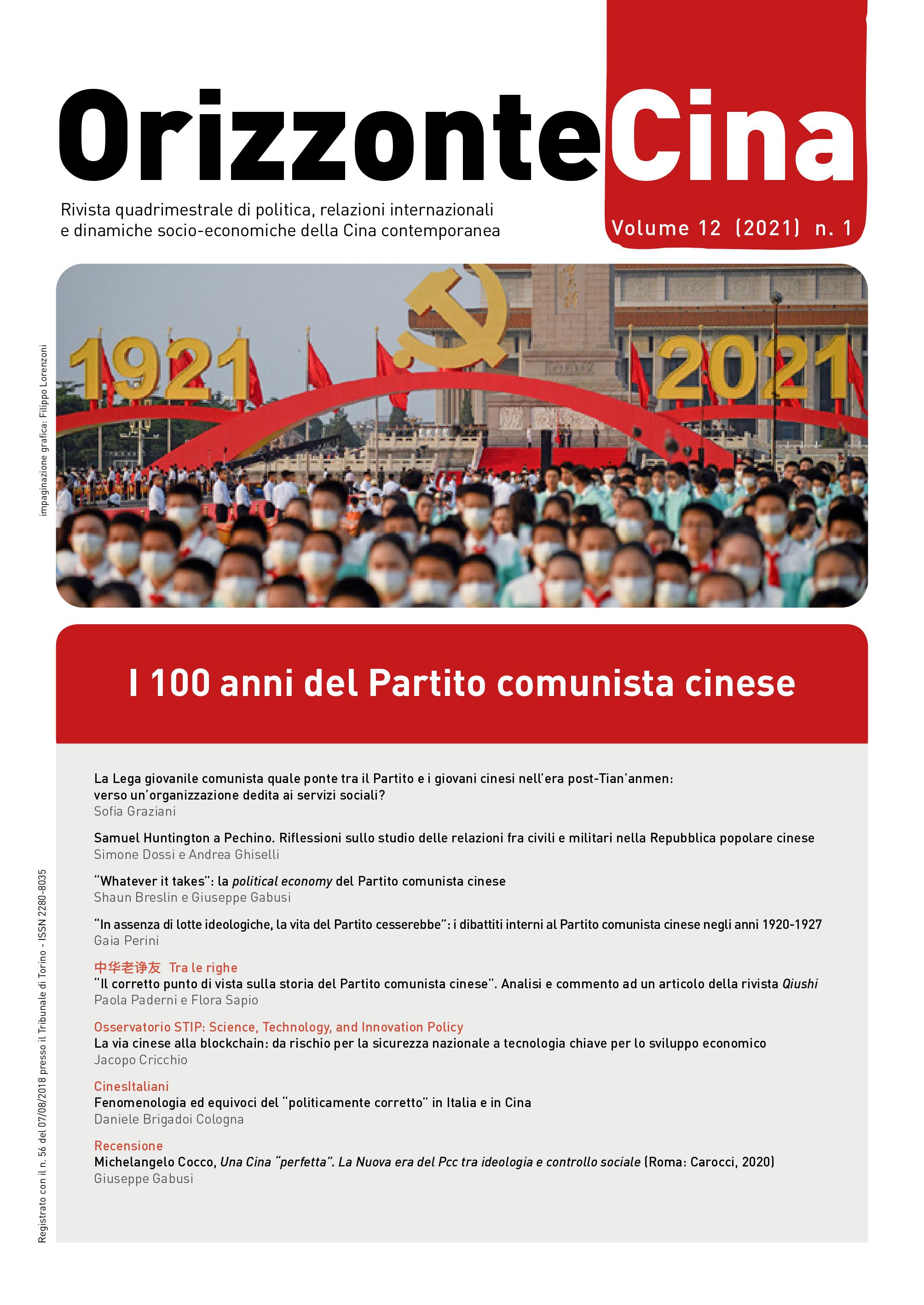V. 12 N. 1 (2021): I 100 anni del Partito comunista cinese

Fondato nel 1921 in una fase di debolezza strutturale e radicale trasformazione della Cina, il Partito comunista cinese (Pcc) guida oggi la seconda economia mondiale e si dispone a proiettare l’“approccio cinese” quale formula di governance efficace anche oltre i confini cinesi. Tali confini restano contestati a vari livelli. Sul piano istituzionale interno è mutato l’assetto “un paese, due sistemi” in seguito all’implementazione della Legge sulla sicurezza nazionale per Hong Kong. Su quello politico-internazionale, la dialettica tra Pechino e l’Occidente ha riportato la componente ideologica in primo piano, con riflessi sulla stabilità nello stretto di Taiwan. Sul versante identitario, l’esercizio di una più pervasiva influenza sulla definizione del perimetro e dei caratteri che qualificano la “cinesità”, soprattutto rispetto alle minoranze nazionali e alle comunità della diaspora cinese, colloca il Pcc in una posizione centrale rispetto alle strategie di costruzione di senso e di rappresentazione di sé anche di individui e comunità che non necessariamente hanno un passaporto della Repubblica popolare cinese.
Al contempo, la robusta crescita dell’economia “socialista di mercato” cinese e la risposta alla pandemia da Covid-19 corroborano la credibilità politica del Pcc quale agente di modernizzazione, sia dinnanzi all’opinione pubblica interna, sia presso i paesi che puntano a una diversificazione delle strategie di sviluppo oltre a quelle prospettate dalle istituzioni internazionali dominate dai paesi occidentali. La legittimazione fondata sulla performance del sistema di governance leninista cinese nell’accrescere la disponibilità di risorse materiali presso la popolazione è integrata dalla componente repressiva, che determina la compressione degli spazi di emancipazione individuale, libera impresa, rappresentanza sociale e azione collettiva non supervisionati al Pcc.



